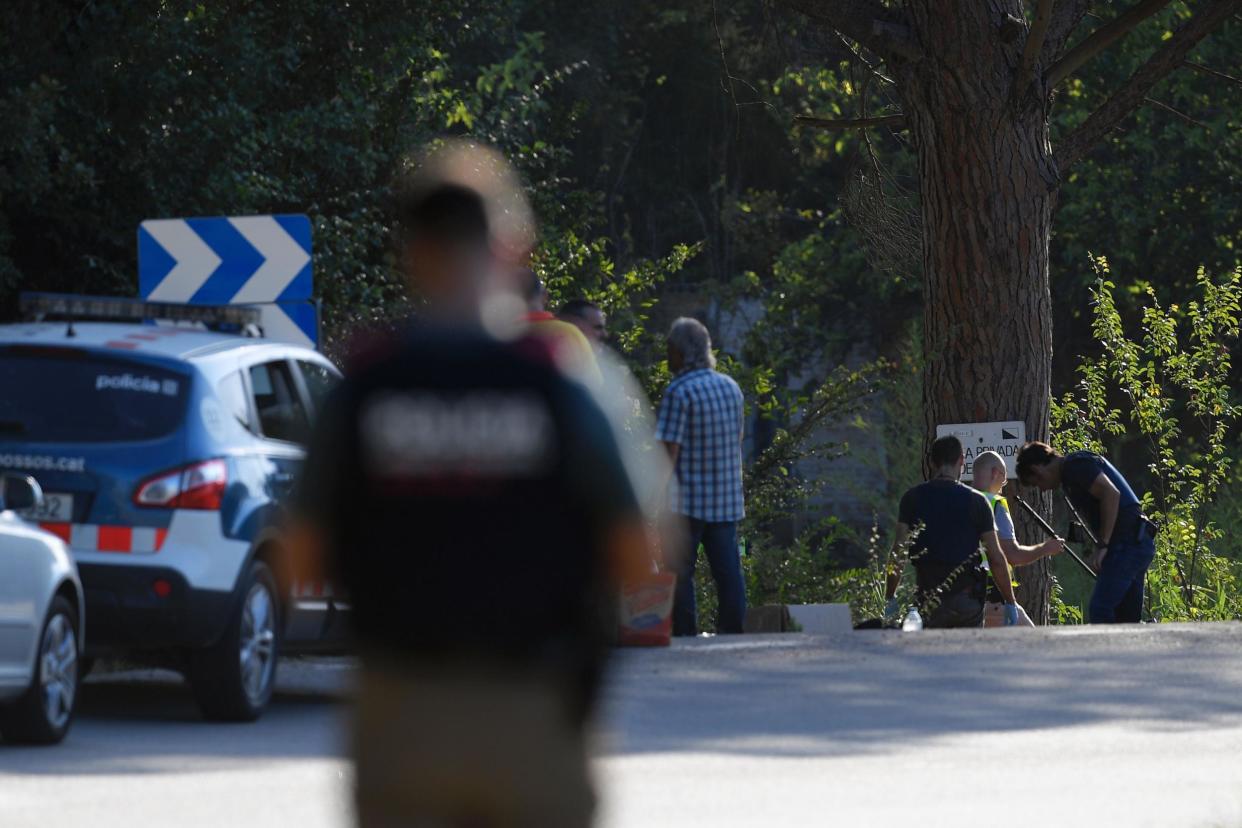Barcelona attacker Younes Abouyaaqoub shot dead by police near the city after four-day manhunt

The man who killed 13 people in a crowded pedestrian area in Barcelona on Thursday has been shot and killed by police after a four-day manhunt.
Younes Abouyaaqoub, a 22-year-old Moroccan national, was gunned down in a dramatic showdown in the town of Subirats while wearing a fake suicide belt and in possession of a bag of knives, just an hour’s drive from Las Ramblas in central Barcelona where the attack took place.
Police, who moved in after a public tip-off of someone matching Abouyaaqoub’s description near a petrol station, now believe that the terrorist escaped from the original attack by hijacking a car, killing its original driver with a knife and dumping his body.
Police on Monday morning had announced they were internationalising their manhunt in case he had fled over the border to France, prompting fears that Abouyaaqoub might have slipped through their fingers and escaped the area.
It brings to an end the search for a cell that police believe was planning a series of attacks, including potentially a large truck bomb. Officers found the remains of 120 gas canisters and two dead bodies in a house thought to be being used as a bomb factory before it exploded on Wednesday night, hours ahead of the Las Ramblas attack.
Of the 11 other members of the 12-man Isis terror cell believed by police to be behind the attack in Barcelona, four are now in custody, five were shot and killed by officers after mounting a second attempted attack in Cambrils, and two were killed in the explosion of the house.
The attack on Las Ramblas claimed the lives of 14 people including the driver of the hijacked car, with another woman killed on Friday in Cambrils.
One of those killed in the first attack was Julian Cadman, a British-Australian seven-year-old. He was initially thought missing by some members of his family, who appealed for information about his whereabouts – but on Sunday was confirmed as one of those killed in the atrocity.
Police confirmed that one of those killed in the accidental bomb factory explosion on Wednesday night was a former imam suspected of radicalising the group towards committing the atrocity. Abdelbaki Es Satty, had links to the bombers behind the attack on Madrid in 2004 and had lived in a Belgian suburb previously associated with Islamist radicalism.
Els Mossos d’Esquadra, the Catalan provincial police force leading the investigation into the attacks, said in a message posted on Monday: “The suspicious man in Subirats wears what looks like a belt of explosives attached to the body. This man has been shot down.”
In a follow-up, they added: “We confirm that the man shot down in Subirats is Younes Abouyaaqoub, author of the terrorist attack in Barcelona.”
The daughter of a Catalan vineyard owner said her father alerted police after they saw a car crossing their property at high speed, even though the vineyard was closed off.
Roser Venura said police told them to immediately leave the Ventura Soler cava vineyard, located between the towns of Sadurni d’Anoia and Subirats. She said: “We heard a helicopter flying around and many police cars coming toward the gas station” near the property.
Catalonia’s public broadcaster reported that a bomb disposal robot was used following the shooting to examine the apparently fake explosive belt worn by the attacker. Similar fakes were also reported to be worn at the attack in Cambrils.
CCTV images obtained by the Spanish newspaper El Pais appear to show Abouyaaqoub fleeting the scene of Thursday’s attack through Barcelona’s famous La Boqueria market, just off Las Ramblas and near the site of the attack – before he apparently hijacked his getaway vehicle.
The vehicle was later ditched with the body of Pau Pérez, 34, from Vila Franca, who was found stabbed to death in the back seat – bringing the total number of victims of the group to 15.
Isis has claimed responsibility for both the attack in Barcelona and the follow-up attack in Cambrils in which one woman died, attributing it to “soldiers of the Islamic State” and saying it targeted “Crusaders” and “Jews”.
The terror group’s statement about the attacks was riddled with fictions, however, including claiming responsibility for another attack on a bar that did not actually occur.
The four people who remain in custody so far in connection with the attacks are three Moroccans and a citizen of Spain’s North African enclave of Melilla.

 Yahoo News
Yahoo News 
